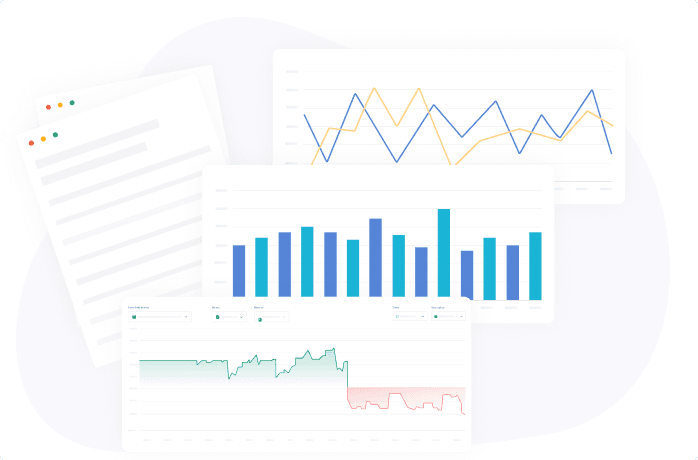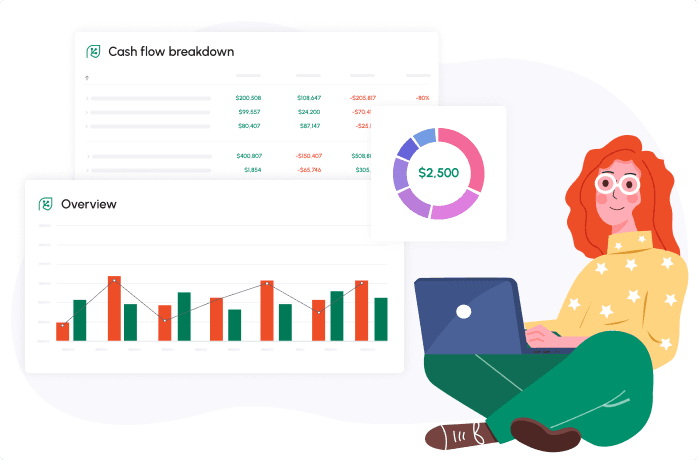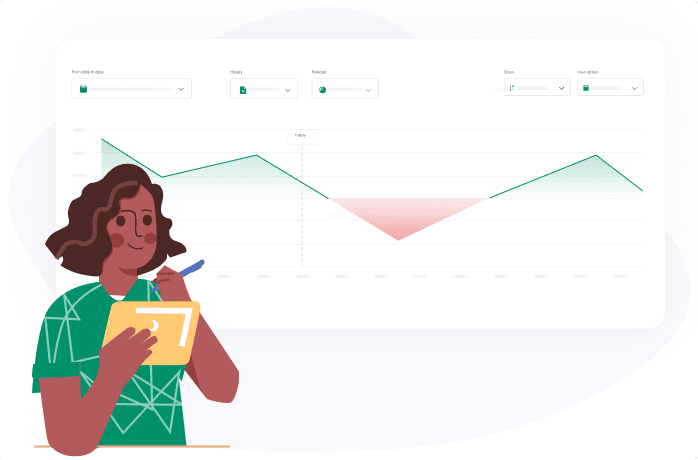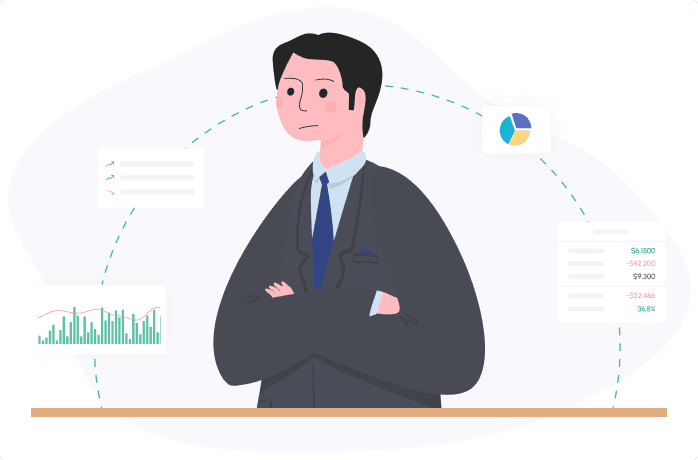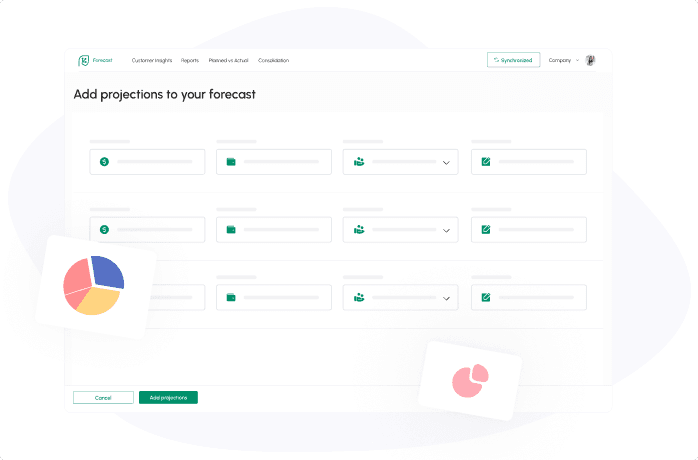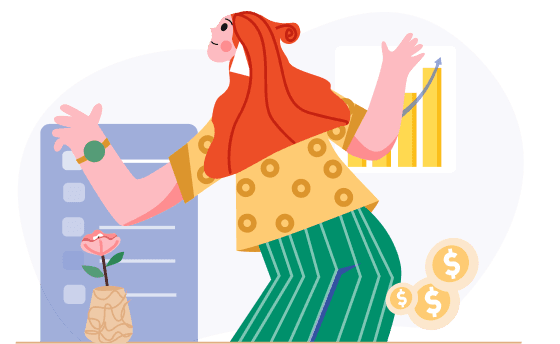
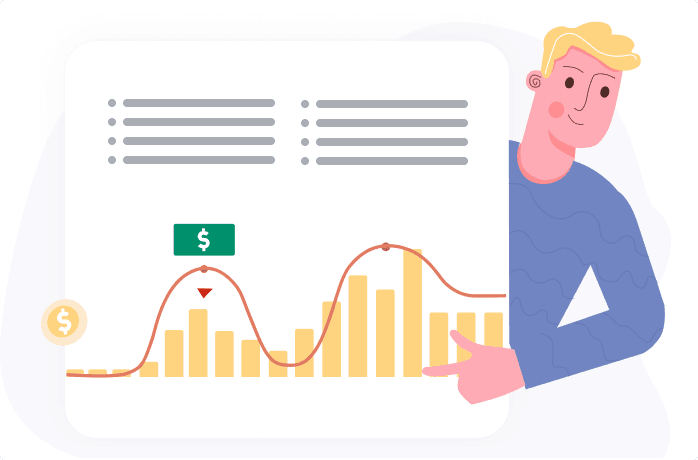
Creating a cash flow forecast is one of the tactics businesses use to better understand their liquidity and financial health. Accounting forecasting is best performed with a tool like Cash Flow Frog, which can easily run complex calculations for you.
However, if you haven’t created a cash flow forecast yet, this guide will help you better understand the process.
Cash Flow Forecast Definition
What does forecasting mean? The definition of a cash flow forecast is simple: “an estimate of the cash inflows and outflows of a business during a specific period.”
What Are the Benefits of Cash Flow Forecasting?
Why is a cash flow forecast important? Any time you run a forecast, it can be highly accurate or inaccurate. External factors can rapidly increase or decrease business. However, there are simply too many advantages of forecasting to ignore.
The main advantages of cash flow budgeting and forecasting include:
Cash Shortage Planning
When cash flow projection analysis shows that you have too little cash, it can mean the difference between keeping operations running or not. Forecasts may uncover a real operational issue that will impact the long-term health of the business.
Through forecasting, you may find that your second highest-selling good is going obsolete and will cause a 30% reduction in revenue in the next six months based on current trends.
If this were to happen without forecasts to shed light on the issue, it would lead to serious cash shortages. However, with a forecast, you’ll have the option to:
- Take immediate corrective action to help boost revenue in other segments
- Reach out to lenders to help get you through the low cash period
- Preemptively plan for cash shortages
When you know that there’s a risk of a cash shortage, you’ll have the option to take immediate action rather than being surprised at the end of the quarter when you can’t make payroll.
Utilize Cash Surpluses
A lack of cash is a major financial issue for businesses, but one problem that is good to have is a major cash surplus. Having too much cash without utilizing it can have a negative impact on future operations.
With the foresight of a surplus, you’ll have the option to:
- Begin investing more cash in operations
- Take business risks
- Invest in research and development
- Enter new markets
Allowing cash to remain idle and not grow can be a major growth issue for your business. With the right projections, you can make smarter decisions that will help your operations grow and flourish.
Better Understand “What if” Scenarios
Business is filled with uncertainty. You may wake up tomorrow to a market that is in a recession and cause you to lose 50% of your revenue. However, you can lower the impact risk of your decision by running what is known as “what if scenarios.”
For example, let’s assume that you spend $1 million on a new product being developed. You can run a what-if scenario to understand:
- What happens if 109,000 units of the item are sold?
- What happens if 1,000 units are sold?
In the first scenario, you will then be able to plan to hire new staff and sales teams to help with product growth. You might even need to increase your customer service team to handle the influx of calls or emails from customers.
However, if sales do not meet expectations, you may need to finance operations with loans from lenders or layoff staff.
Forecasts allow you to plug in these variables to better understand what may happen in your business. Knowing the actions that you need to take in the above two examples will allow you to better plan for your organization’s future.
In essence, running forecasts for your cash flow will:
- Improve your decision-making
- Help you better manage risks
With all of this in mind, it’s time to learn how to build a cash flow forecast.
How To Forecast Cash Flow
Creating your own cash flow forecast will require you to have data on:
- Cash inflows
- Cash outflows
- Growth
You'll need to have a full account of your expenses, both fixed and variable, too. Two main forecasting methods can be used:
Cash Flow Forecasting Methods
There are two main types of cash flow forecasting methods: direct and indirect.
Direct
Direct cash forecasting is ideal for short-term forecasts of a year or less. This type of cash flow method offers higher accuracy and is the preferred option of the Accounting Standards Board.
Why?
Direct methods provide:
- Clear cash flow receipts
- Clear cash flow payments
The direct method complies with both IAS and GAAP standards and usually creates categories. For example, you may have a category for:
- Expenses
- Losses
- Income taxes
- Sales income
- Etc.
Breaking down all of the cash inflows and outflows makes it easier for investors and stakeholders to read projections, which is the main benefit of the direct method.
Of course, you’ll need to sum up your inflows and outflows so that you can subtract your outflows from inflows to find your end-of-period cash flow.
Indirect
While businesses may prefer the indirect cash flow method, it lacks transparency. You'll need to begin with net income and make adjustments by adding and subtracting variables. In addition, you’ll need to know cash flow from:
- Operations
- Investments
- Finance
You'll then need to make adjustments and subtract all of your outflows from your inflows to understand your financial health at the end of the forecast period.
What's The Main Difference Between Indirect and Direct Cash Flow Forecasting?
If you’re trying to determine whether the indirect or direct method of cash flow is best, we choose to use the direct method on our platform. The key differences are:
- Direct uses cash inflows and outflows to run forecasts
- Indirect uses net income and then makes adjustments based on variables
For accuracy, it’s ideal to use the direct method when running forecasts.
Cash Flow Forecasting Best Practices for Accurate Projections
The forecast process is tedious, and you need to understand your historical growth, expenses and income well to run an accurate projection. You can use a cash flow forecasting example to help you understand the basics of a projection, but you should also consider the following best practices:
- Data-driven approaches help improve forecasting accuracy. You should take the time to gather all of the data you can about operations, particularly cash inflows and outflows, to better create forecasts.
- Automate everything you can. When you use a tool like Cash Flow Frog, it’s easier to gather all of your data in one central location. Using automation reduces the risk of errors and saves as much as 80% of your time spent on building a report.
- Consider using a 13-week forecast. A 13-week forecast period allows for greater short-term accuracy while having less of an impact on long-term plans.
When possible, use what is known as a rolling forecast. This type of forecast allows you to adjust forecasts to provide an accurate overview of your cash position.
Accurate Cash Flow Forecasting with Cash Flow Frog
Cash flow planning is an integral part of your business’s operations, and it can help you make smarter business decisions. If you’re not comfortable running all of the forecasting calculations manually, Cash Flow Frog can help.
We provide accurate, estimated cash flow and provide multiple perspectives for your cash flow statement.
You can use our platform to run cash flow forecasts daily, weekly, monthly, quarterly or whenever you want. Our platform uses the direct method of cash flow to provide you with the most accurate forecasts possible.
Related posts:
You may be interested:
New:



